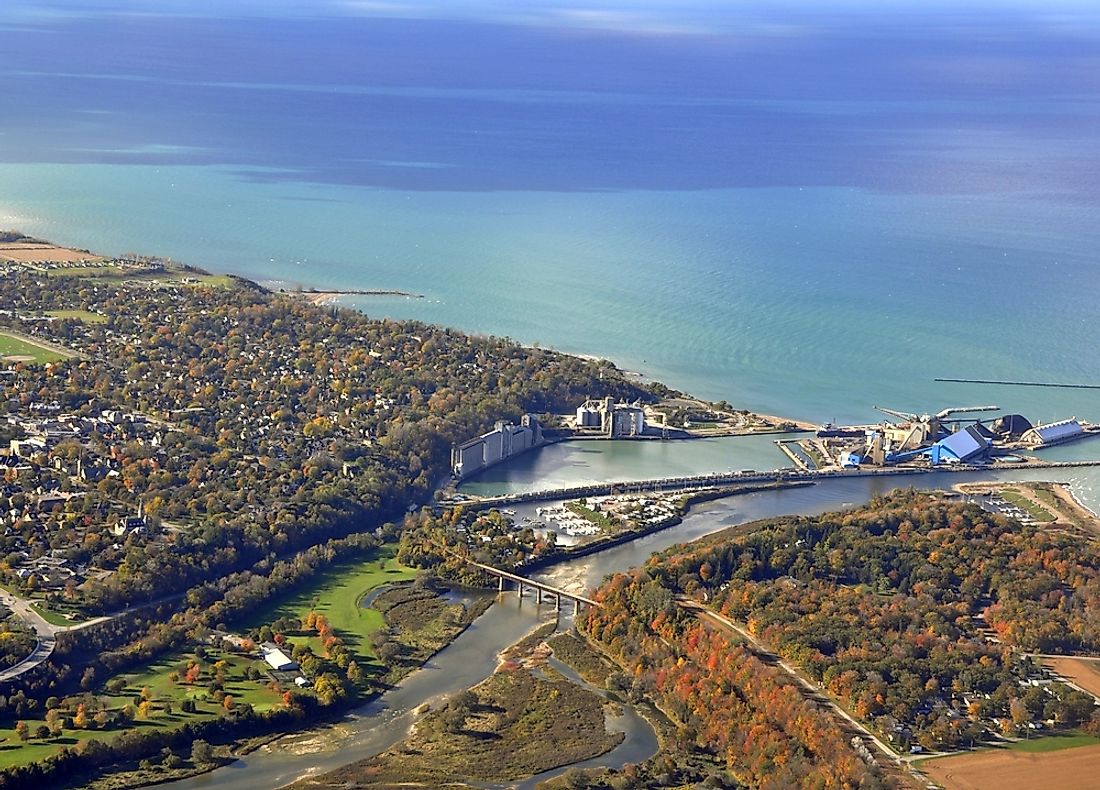Where is the World's Largest Underground Salt Mine?

Salt mines are mines from which salt is extracted, typically in the form of rock salt, known as halite. Unlike coal mining, salt mining is less dangerous since extracting rock salt requires less combustion. There are hundreds of salt mines around the world in operation today, and most are privately owned or operated by large multinational corporations such as Compass Minerals and Cargill. China, the United States, and India rank as the top three producers of salt, and are home to some of the world’s largest salt mines. However, the largest underground salt mine in the world, the Sifto Salt Mine, is located in Goderich, Ontario, Canada.
Sifto Salt Mine
The Sifto Salt Mine in Goderich is the world's largest underground salt mine. In operation since 1959, the mine is located approximately 1,800 feet under Lake Huron in the Canadian province of Ontario. It stretches over 1.5 miles wide, 2 miles long, and covers an area of 2.7 million squares miles. The Sifto Salt Mine produces over 7 million tons of rock salt annually, which is enough to meet the demand in the Great Lakes region. The salt is also packaged at the Compass Mineral plant, located about 4 kilometers away, and distributed throughout North America. Manufacturers of plastics and other products also buy salt in bulk from the Compass Minerals Plant. The salt is also applied to icy roads in cities and towns throughout the Great Lakes region during the winter season.
Overview of the Mine
The Sifto Salt Mine is located deep below the waters of Lake Huron. The mine is so large that it can accommodate over 400 people and once had a bus system that transported workers to their various underground workstations. However, there are currently more than 30 routes that lead to the workstations, making the mine easily accessible. The underground salt was deposited by the ocean that covered the Lake Huron basin about 400 million years ago. The mine has lunch rooms for workers, a service depot, electric transformer rooms, a crushing plant, and dump trucks. The salt mine was discovered in 1866 by Sam Platt during a search for oil.
Mining Process
Underground salt mining can be challenging, especially if a mine is located under water. However, miners at the Sifto Salt Mine have perfected the process. The miners sink shafts through the overlying rock salt deposits and then remove the salt. A large square cavern alternating with pillars of salt is left behind. This mining technique is referred to as "room and pillar" mining. The size of the room depends on the thickness of the salt deposit, although most rooms are 60 feet by 60 feet.
Goderich Plant
The Goderich plant has been in operation since 1867. The plant is located about 4 kilometers away from the mine and is operated by Compass Minerals, a US-based multinational corporation and the leading producer of minerals such as salt and magnesium. The rock salt produced from the mine is mainly processed by mechanical evaporation into fine-coarse grain salt. The salt is packaged at the plant and shipped to several destinations.











